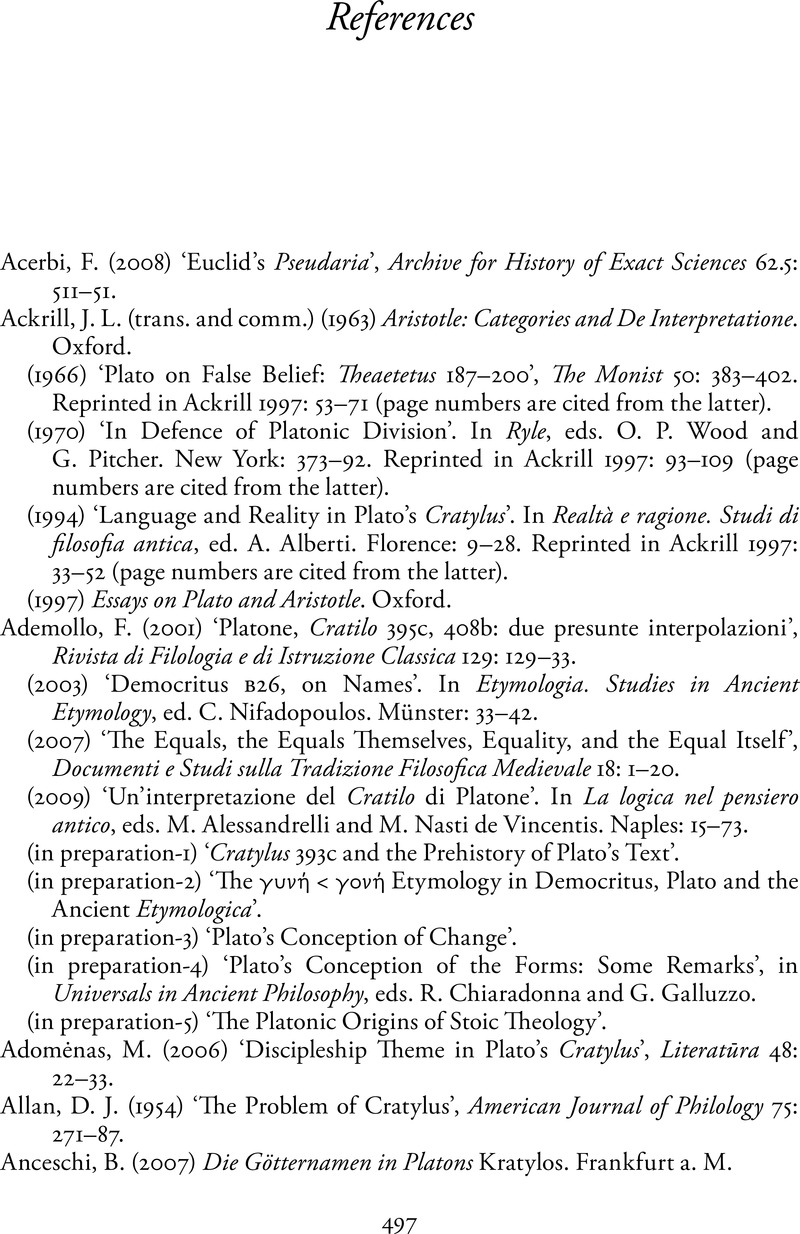Book contents
- Frontmatter
- Contents
- Preface
- Preliminary note
- List of abbreviations
- Introduction
- 1 Cratylus' naturalism (383a–384c)
- 2 Hermogenes' conventionalism (384c–386e)
- 3 Naturalism defended (386e–390e)
- 4 Naturalism unfolded (390e–394e)
- 5 Naturalism illustrated: the etymologies of ‘secondary’ names (394e–421c)
- 6 Naturalism illustrated: the primary names (421c–427e)
- 7 Naturalism discussed (427e–433b)
- 8 Naturalism refuted and conventionalism defended (433b–439b)
- 9 Flux and forms (439b–440e)
- Appendix 1 The text of 437d10–438b8
- Appendix 2 Some interpolations and non-mechanical errors in W and δ
- References
- I General index
- II Index of ancient texts
- III Index of Greek expressions
- IV Index of words discussed in the Cratylus
- References
References
Published online by Cambridge University Press: 25 October 2011
- Frontmatter
- Contents
- Preface
- Preliminary note
- List of abbreviations
- Introduction
- 1 Cratylus' naturalism (383a–384c)
- 2 Hermogenes' conventionalism (384c–386e)
- 3 Naturalism defended (386e–390e)
- 4 Naturalism unfolded (390e–394e)
- 5 Naturalism illustrated: the etymologies of ‘secondary’ names (394e–421c)
- 6 Naturalism illustrated: the primary names (421c–427e)
- 7 Naturalism discussed (427e–433b)
- 8 Naturalism refuted and conventionalism defended (433b–439b)
- 9 Flux and forms (439b–440e)
- Appendix 1 The text of 437d10–438b8
- Appendix 2 Some interpolations and non-mechanical errors in W and δ
- References
- I General index
- II Index of ancient texts
- III Index of Greek expressions
- IV Index of words discussed in the Cratylus
- References
Summary

- Type
- Chapter
- Information
- The Cratylus of PlatoA Commentary, pp. 497 - 508Publisher: Cambridge University PressPrint publication year: 2011



